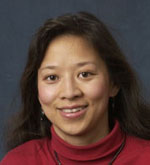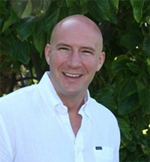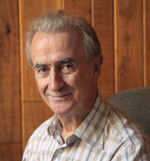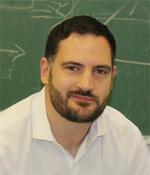|
Sponsoring Organizations
|
|
2016 ACC Plenary and
Semi-Plenary Lectures
The conference technical, (semi-)plenary, and
special sessions will reflect the diversity of theory and applications
of control that is one of the hallmarks of an ACC. To encourage
industry participation, we have requested and have obtained permission
from the American Automatic Control Council to have a one-day
registration fee (on-site only).
Our slate of plenary and semi-plenary speakers consists of well-known
researchers and leaders from industry and academia:
 |
Plenary Lecture, Friday 8-9:30 am, July 8, 2016
Location: Salons E, F, G
Combined Feedforward/Feedback Control of Flexible
Structures: Recurring Themes across Diverse Applications
Lucy Pao
The University of Colorado at Boulder, USA
ABSTRACT
In the past, robotic manipulators, machine tools,
measurement devices, and other systems were designed with rigid
structures and operated at relatively low speeds. With a growing
demand for fuel efficiency, smaller actuators, and speed,
lighter weight materials are increasingly used in many systems,
making them more flexible. Achieving high-performance control of
flexible structures is a difficult task, but one that is now
critical to the success of many important applications, such as
atomic force microscopes, disk drives, tape drives, robotic
manipulators, gantry cranes, wind turbines, satellites, and the
space station remote manipulator system. The unwanted vibration
that results from maneuvering or controlling a flexible
structure often dictates limiting factors in the performance of
the system. Over the last few decades, many feedback,
feedforward, and combined feedforward/feedback control methods
have been developed for flexible structures. We will discuss and
compare several of these control methods in conjunction with
overviewing some of the issues in the modeling of flexible
structures, and we will highlight a few recurring themes across
the diverse application areas mentioned above.BIOGRAPHY
Lucy Pao is currently a Professor in the Electrical, Computer,
and Energy Engineering Department and a Professor (by courtesy)
in the Aerospace Engineering Sciences Department at the
University of Colorado Boulder. She earned B.S., M.S., and Ph.D.
degrees in Electrical Engineering from Stanford University. Her
research has primarily been in the control systems area, with
applications ranging from atomic force microscopy to disk drives
to digital tape drives to megawatt wind turbines. Selected
recent and current professional society activities include being
General Chair for the 2013 American Control Conference, an IEEE
Control Systems Society (CSS) Distinguished Lecturer
(2008-present), a member of the IEEE CSS Board of Governors
(2011-2013 (elected) and 2015 (appointed)), and a Fellow of the
Renewable and Sustainable Energy Institute (2009-present).
Selected recent honors include elevation to IEEE Fellow in 2012,
the 2012 IEEE Control Systems Magazine Outstanding Paper Award,
and election to Fellow of the International Federation of
Automatic Control (IFAC) in 2013.
|

 |
Semi-Plenary Lecture, Wednesday 8-9 am, July
6, 2016
Location: Salon G
Open-Ended Control Challenges in the Oil Service Industry
Dr. Jason Dykstra (Halliburton) and Professor Karlene A. Hoo
(Montana State University)ABSTRACT
Electricity production in the US has changed dramatically
since 2000, with the percent of electricity produced from gas
growing from 16% to 30%, while coal dropped from 52% to 37%.
These changes are primarily driven by two technologies used in
shale rock formations, directional drilling to create horizontal
wells, and hydraulic fracturing to release the gas within the
relatively impermeable rock. This presentation will first give a
brief operational overview of hydraulic fracturing. Next,
challenges that relate to the control of this technology are
described. Lastly, two examples are presented, one a theoretical
study investigating the potential of model-based feedback
control of the hydraulic fracturing process and the other an
implementation that highlights the importance of measurements
and data uncertainty when designing effective and robust
controllers.
BIOGRAPHY: Dr. Jason Dykstra
Dr. Jason Dykstra received his Ph.D. in Mechanical Engineering
from the University of Wisconsin – Madison. He is currently the
Chief Advisor to the corporate research group, where he is
tasked with creating the technology vision of high risk
research. He has worked in the automotive, nuclear, steel mill,
and heavy equipment industries before joining the oil services
company Halliburton upon completion of his doctorate. At
Halliburton he has designed control systems for cementing,
cryogenic nitrogen pumping, chemical blending, and high pressure
fracking equipment along with fault detection and virtual
sensing system that are used in over 100 countries every day.
Jason has invented several award winning tools that have been
installed in wells in South America, the North Sea, and the
Middle East. He holds 62 U.S. patents with over 100 patent
applications in process, and was awarded the E&P meritorious
award for engineering innovation 2012, the OTC spotlight on
innovation award 2012, and a finalist in the world oil awards
2013. Jason is currently interested in creating value by
distilling control theory to practice in the broad range of
products and services Halliburton offers.
BIOGRAPHY: Dr. Karlene A. Hoo
Karlene A. Hoo has a B.S. degree from the Univ. Pennsylvania and
M.S. and Ph.D. degrees from the Univ. of Notre Dame. All her
degrees are in chemical engineering. Prior to joining academia
she was an employee of Exxon Chemical Co. and the DuPont
chemical Co. She has experience in research administration at as
co Director of an Industrial consortium on Process Control and
Optimization, as an Assoc. Dept. Chair, Assoc. Dean of Research
in the engineering, and Assoc. Vice President for Research and
Acting Vice President for Research at the university level. In
2011-2013, Karlene was a Program Director at the National
Science Foundation in the Industrial Innovations and
Partnerships in the Engineering Directorate. Currently, Karlene
is a tenured full professor of chemical and biological
engineering and the Dean of the Graduate School at Montana State
University. Her research interests include modeling of complex
dynamical systems, control system synthesis, multivariate
statistics, and optimization with applications in chemical,
petrochemical, and biological processes.
|
 |
Semi-Plenary Lecture, Wednesday 8-9 am, July
6, 2016
Location: Salon FTherapeutic robotics: challenges of
controlling physical interaction
Neville Hogan
Massachusetts Institute of Technology (MIT) , USA
ABSTRACT
Robotic technology can: (i) deliver therapy to aid recovery
after neurological disease; (ii) replace limb function following
amputation; and (iii) provide assistance to restore function.
This exciting new frontier of robotic applications requires
sensitive but forceful physical interaction with a human, yet
physical contact can severely de-stabilize robots. Despite these
challenges, clinical evidence shows that robot therapy is both
effective and cost-effective. Motorized amputation prostheses
present even greater challenges. They must manage physical
interaction with objects in the world as well as with the
amputee. This presentation will review how machine mimicry of
natural control provides the gentleness required for robotic
therapy and enables seamless coordination of natural and
prosthetic limbs. A pre-requisite for success in these
applications is a quantitative knowledge of the human motor
control system.
BIOGRAPHY
Neville Hogan is Sun Jae Professor of Mechanical Engineering
and Professor of Brain and Cognitive Sciences at the
Massachusetts Institute of Technology (MIT). He received the
Diploma in Engineering (with distinction) from Dublin Institute
of Technology in Ireland, and M.S., Mechanical Engineer and
Ph.D. degrees from MIT. Following industrial experience in
engineering design, he joined MIT’s faculty in 1979 and has
served as Head and Associate Head of the MIT Mechanical
Engineering Department’s System Dynamics and Control Division.
He is presently Director of the Newman Laboratory for
Biomechanics and Human Rehabilitation and a founder and director
of Interactive Motion Technologies, Inc. His research interests
include robotics, sensory-motor neuroscience, and rehabilitation
engineering, emphasizing the control of physical contact and
dynamic interaction. He serves on the editorial boards of IEEE
Transactions on Neural Systems and Rehabilitation Engineering,
the Journal of Motor Behavior and the Journal of Healthcare
Engineering. He has been awarded Honorary Doctorates from Delft
University of Technology and Dublin Institute of Technology; the
Silver Medal of the Royal Academy of Medicine in Ireland; the
Henry M. Paynter Outstanding Investigator Award, and the Rufus
T. Oldenburger Medal from the Dynamic Systems and Control
Division of the American Society of Mechanical Engineers.
|
 |
Semi-Plenary
Lecture, Thursday 8-9 am, July 7, 2016
Location: Salon FControlling the Next Generation of Bipedal
Robots and Robotic Assistive Devices
Aaron Ames (2015 Eckman Award Winner)
Georgia Institute of Technology
ABSTRACT
Humans have the ability to walk with deceptive ease,
navigating everything from daily environments to uneven and
uncertain terrain with efficiency and robustness. With the goal
of achieving human-like abilities on robotic systems, this talk
presents the process of formally achieving bipedal robotic
walking through controller synthesis inspired by human
locomotion, and it demonstrates these methods through
experimental realization on numerous bipedal robots and robotic
assistive devices. Motivated by the hierarchical control present
in humans, human-inspired virtual constraints are utilized to
synthesize a novel type of control Lyapunov function (CLF); when
coupled with hybrid system models of locomotion, this class of
CLFs yields provably stable robotic walking. Going beyond
explicit feedback control strategies, these CLFs can be used to
formulate an optimization-based control methodology that
dynamically accounts for torque and contact constraints while
being implementable in real-time. This sets the stage for the
unification of control objectives with safety-critical
constraints through the use of a new class of control barrier
functions provably enforcing these constraints. The end result
is the generation of bipedal robotic walking that is remarkably
human-like and is experimentally realizable, together with a
novel control framework for highly dynamic behaviors on bipedal
robots. Furthermore, these methods form the basis for achieving
a variety of advanced walking behaviors—including multi-domain
locomotion, e.g., human-like heel-toe behaviors—and therefore
have application to the control of robotic assistive devices, as
evidenced by the demonstration of the resulting controllers on
multiple robotic walking platforms, humanoid robots and
prostheses.
BIOGRAPHY
Aaron D. Ames is an Associate Professor at the Georgia
Institute of Technology in the George W. Woodruff School of
Mechanical Engineering and the School of Electrical and Computer
Engineering as of July 2015. Prior to joining Georgia Tech, he
was an Associate Professor and Morris E. Foster Faculty Fellow
II in Mechanical Engineering at Texas A&M University, with joint
appointments in Electrical & Computer Engineering and Computer
Science & Engineering. Dr. Ames received a BS in Mechanical
Engineering and a BA in Mathematics from the University of St.
Thomas in 2001, and he received a MA in Mathematics and a PhD in
Electrical Engineering and Computer Sciences from UC Berkeley in
2006. At UC Berkeley, he was the recipient of the 2005 Leon O.
Chua Award for achievement in nonlinear science and the 2006
Bernard Friedman Memorial Prize in Applied Mathematics. Dr. Ames
served as a Postdoctoral Scholar in Control and Dynamical
Systems at the California Institute of Technology from 2006 to
2008. In 2010 he received the NSF CAREER award for his research
on bipedal robotic walking and its applications to prosthetic
devices. Dr. Ames’ research interests center on robotics,
nonlinear control, hybrid systems and cyber-physical systems,
with special emphasis on foundational theory and experimental
realization on robotic systems. His research lab designs, builds
and tests novel bipedal robots and prostheses with the goal of
achieving human-like bipedal robotic walking and translating
these capabilities to robotic assistive devices.
|
 |
Semi-Plenary Lecture, Thursday 8-9 am, July
7, 2016
Location: Salon GNano to Really Macro: How working with AFMs
can help with design of medical devices for hospitals in
resource poor countries
Delphine Dean
Clemson University, USA
ABSTRACT
In this talk, I will describe some of our work on
nanomechanics of biological systems and design of medical
devices for hospitals in resource poor countries. These may
sound like very disparate areas. However, you may be surprised
to see how well the skills students learn in one translate well
to the other. Atomic Force Microscopy and high precision
instrumentation are common tools for the basic sciences. We can
use these systems to measure small-scale intermolecular forces
and characterize the nano-structures of individual cellular
components. These types of measurements help to build more
accurate models of tissues and organs to predict behavior during
disease and injury. Beyond the basic sciences, the same types of
concepts and skills needed for nanoscience work can be applied
to solve real-world engineering problems in resource poor
hospitals today. Working with engineers and clinicians in
Tanzania, our students have designed several novel solutions to
problems they have seen in clinics. These range from infant
warmers to ink-jet printed diabetes test supplies to basket
woven neck braces. In addition, while in the hospitals, our
students put their debugging skills to the test by helping to
repair and maintain clinical devices and equipment. Experiences
in the lab and in the field give students a rounded perspective
on engineering and a clearer outlook on their future career
paths.
BIOGRAPHY
Dr. Delphine Dean is the Gregg-Graniteville Associate
Professor of Bioengineering at Clemson University. She earned
her Ph.D. in Electrical Engineering and Computer Science from
the Massachusetts Institute of Technology in 2005 and started
her faculty position at Clemson in January 2007. Her lab leads a
wide range of studies focused on understanding mechanics and
interactions of biological systems across length scales. Her
expertise is in nano- to micro-scale characterization of
biological tissues including experimental techniques such as
atomic force microscopy and mathematical modeling such as finite
element analysis. She is the recipient of the 2011 Phil and Mary
Bradley Award for Mentoring in Creative Inquiry for her work in
mentoring undergraduates at Clemson, where she currently mentors
12 undergraduate creative inquiry research and design teams.
These multi-year undergraduate project teams have focused on
several areas including the redesign of medical training
simulators, investigating the use of robotics for solving
biomedical problems, and developing medical technology for the
resource poor countries. Working with collaborators in country,
her students have created new sustainable technological
solutions for Tanzanian clinical settings. The teams have been
recognized with several awards, including most recently 2014
Lemelson-MIT Undergraduate Cure-It prize.
|
 |
Public Lecture, Wednesday, 6:30-7:30 pm, July 6,
2016
Location: Salons E, F, and GMathematical Optimization in Everyday Life: The
Growing Role of Hidden Algorithms in Smart Products and Systems
Stephen Boyd
Stanford University, USA
ABSTRACT
Many current products and systems employ sophisticated
mathematical algorithms to automatically make complex decisions,
or take action, in real-time. Examples include recommendation
engines, search engines, spam filters, on-line advertising
systems, fraud detection systems, automated trading engines,
revenue management systems, supply chain systems, electricity
generator scheduling, flight management systems, and advanced
engine controls.
I'll cover the basic ideas behind these and other
applications, emphasizing the central role of mathematical
optimization and the associated areas of machine learning and
automatic control. The talk will be nontechnical, but the focus
will be on understanding the central issues that come up across
many applications, such as the development or learning of
mathematical models, the role of uncertainty, the idea of
feedback or recourse, and computational complexity.
BIOGRAPHY
Stephen Boyd is the Samsung Professor of Engineering, and
Professor of Electrical Engineering in the Information Systems
Laboratory at Stanford University. He received the A.B. degree
in Mathematics from Harvard University in 1980, and the Ph.D. in
Electrical Engineering and Computer Science from the University
of California, Berkeley, in 1985, and then joined the faculty at
Stanford. His current research focus is on convex optimization
applications in control, signal processing, and circuit design.
Professor Boyd is the author of many research articles and three
books: Convex Optimization (with Lieven Vandenberghe, 2004),
Linear Matrix Inequalities in System and Control Theory (with L.
El Ghaoui, E. Feron, and V. Balakrishnan, 1994), and Linear
Controller Design: Limits of Performance (with Craig Barratt,
1991). His group has produced several open source tools,
including CVX (with Michael Grant), a widely used parser-solver
for convex optimization.
Professor Boyd has received many awards and honors for his
research in control systems engineering and optimization,
including an ONR Young Investigator Award, a Presidential Young
Investigator Award, and the AACC Donald P. Eckman Award, given
annually for the greatest contribution to the field of control
engineering by someone under the age of 35. In 2013, he received
the IEEE Control Systems Award, given for outstanding
contributions to control systems engineering, science, or
technology. In 2012, Michael Grant and he were given the
Mathematical Optimization Society's Beale-Orchard-Hays Award,
given every three years for excellence in computational
mathematical programming. He is a Fellow of the IEEE and SIAM, a
Distinguished Lecturer of the IEEE Control Systems Society, and
a member of the National Academy of Engineering. He has been
invited to deliver more than 60 plenary and keynote lectures at
major conferences in control, optimization, and machine
learning.
|
 |
Featured Opening Plenary Talk and Reception,
Tuesday evening, july 5, 6-7 pm, Salon E
ACC 2016 is proud
to present a Special Opening Lecture by Jack Little, cofounder and
president of MathWorks. The lecture will be immediately followed by
the Opening Reception, generously sponsored by MathWorks.
Accelerating the Pace Toward Smarter Controlled Systems
Jack Little, MathWorks, USA
Tuesday, July 5, 6:00 - 7:00
pm
Location: Salon E
Thirty
years ago, computer-aided control system design involved an exclusive
community of engineers, typically in top research labs or large
companies, running esoteric codes on timeshared minicomputers to
design and analyze control algorithms, often for expensive systems
produced in low volumes. Today, computer-aided control system design
has grown into Model-Based Design, encompassing not only system
analysis and algorithm design, but also implementation through code
generation, plus verification and validation on both models and
embedded code. It is used in every industry that creates today’s smart
systems – aerospace, automotive, industrial automation, medical
devices, robotics, energy, and many more – not only for the controls
but integrating computer vision, communication, and machine learning.
In this talk, Jack Little reviews the evolution of control design
tools, and the corresponding changes in controls education and
research. Jack then looks forward to the future of Model-Based Design
and how it is addressing the next generation of control engineers:
researchers and developers working on challenges such as
cyber-physical systems and distributed systems, but also students and
makers taking advantage of easy-to-use software with low-cost hardware
– everyone building the smarter controlled systems of the future.
Jack
Little is
president and cofounder of MathWorks. He was a coauthor and principal
architect of early versions of the company's flagship MATLAB product
as well as Signal Processing
Toolbox and Control System Toolbox.
Jack holds a B.S. degree in electrical engineering and computer
science from MIT (1978) and an M.S.E.E. degree from Stanford
University (1980).
A Fellow of the IEEE and Trustee of the
Massachusetts Technology Leadership Council, he writes and speaks
about technical computing, Model-Based Design, entrepreneurship, and
software industry issues.
|
|
|
|
|
Tentative Key Dates
Draft Manuscripts:
due September 30, 2015
Best Student Paper Nominations:
due October 5, 2015
Workshop Proposals:
due October 16, 2015
Applications Tutorials:
due November 23, 2015
Acceptance/Rejection Notice:
by January 31, 2016
Final Manuscript Submission:
due March 22, 2016
Applications Friday
Student
Poster Submission:
due June 15, 2016
|

